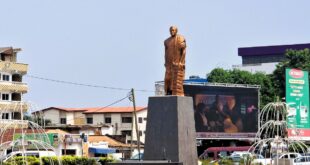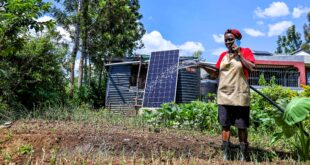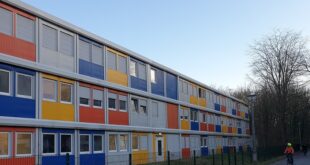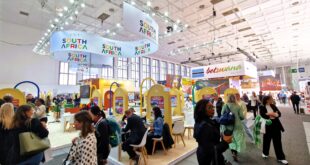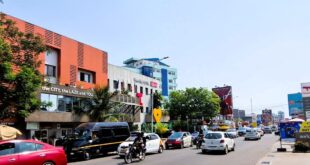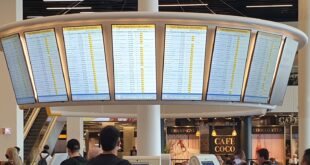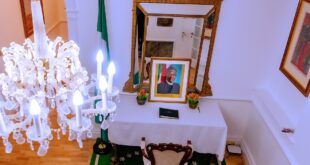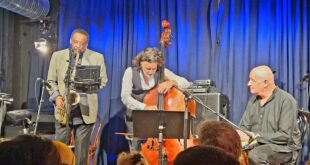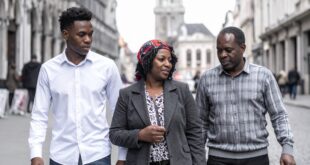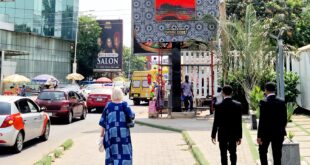Literally translated, Boa Vista, the easternmost island of Cape Verde, means “beautiful view” and it lives up to its name, surprising visitors with stunning views. But there is so much more to Boa Vista than spectacular landscapes and observation points, as our Associate publisher Bugs Steffen discovered when he went to explore.
I was asked how I came up with the idea to visit Cape Verde. There are quite a few people who have little knowledge, if any, of Cape Verde. “Where is it you’re going? Where on earth is that? Near the Maldives?” friends asked. But for me, a visit to Cape Verde had been a “must do” for quite some time. It is the music of the islands that has captured me. Cesaria Evora, the ‘Grand Madame’, and her equally famous compatriots such as Lura and Sara Tavares all have their musical roots here and have been at the top of the world music charts for years.
Like many other tourists, I was diverted to Cape Verde rather sooner than I had hoped – something I had not planned but was grateful for. The safety concerns surrounding popular North African destinations such as Tunisia and Egypt forced many travellers, including myself, to change their bookings. As a result, the island state has seen a real wave of holiday makers.
Cape Verde had so far been an insider tip and island hopping in order to experience all of the islands is still a bit of a chore. There are small, local airlines and rickety ferries but either method of travel to discover individual islands in depth requires patience and a fair amount of African “laid-back” attitude.
For those who prefer an easy, relaxing and comfortable island experience, there are now direct flights from major European tour operators such as TUI or Thomson. You can fly from Frankfurt to two of the islands, Sal and Boa Vista. The reason why these two destinations are on offer is simple: they are the site of the largest all-inclusive resorts. For now, these are tucked away close to the idyllic beaches and well adapted to the barren landscape.
A mere 4,000 of the island population (435,000 altogether) live on Boa Vista. An outpost of the slave trade in the past, Boa Vista, with its deserts and sandy volcanic landscapes, has evolved to become an ideal seaside holidays island.
Sal Rei, the capital, is a dreamy fishermen’s village and Rabil, the other larger town on top of a mountain, does not have much to offer apart from the airport and local artisan pottery. Both towns are connected by the only paved road on the island. Other than that, the road network consists of cobbled streets that often deteriorate into dirt roads. This requires the use of 4-wheel-drive vehicles and turns any discovery trip across the island into an exciting adventure.
Trips to destinations such as Deserto de Viana, the Santa Maria ship wreck or the perfect Santa Monica beach all offer beautiful views. In addition, you can go whale watching off the coast.
It is easy to fill a fortnight’s stay on the island with activities; for those who don’t want to rent a vehicle, there are plenty of excursion offers from various tour operators or the possibility to hire a taxi and driver.
The greatest discovery to be made on this island is its inhabitants! If one moves about with an open mind, it doesn’t take long to find out that the Cape Verdeans are a lovely people, unobtrusive and yet warm and friendly. A glance or friendly gesture will always be reciprocated and you should try and talk to people. Don’t be shy! Even if you don’t speak Portuguese, you can manage using sign language and if push comes to shove, someone who speaks English can be found in a jiffy.
Hotels are the easiest places to meet Cape Verdeans since many of them work there. However, very few hotel guests know how Cape Verdeans live in their homes and about the hardships of their everyday lives; a world so very different from the comfortable world of the resorts.
And yet we shouldn’t ignore those views of the island. Taking in this reality may help to alter our European life of luxury-induced tendency to waste and take things for granted.
The supply of water, and drinking water in particular, is one of the main problems, and not just on Boa Vista…Whereas the hotels have water galore, small towns and villages in the hinterland mostly have to rely on water supply brought by vehicles for a fee. This is due to a mere three to five days of rain every September, which also makes agriculture nigh impossible. Apart from fish, nearly all goods and products have to be imported.
A visit to the Barraca district of Sal Rei, which you won’t find in any of the travel guides, is a real eye opener on the penury which is characteristic of life on the island. People here make their lives under very basic conditions. Many of the residents work in hotels or as cab drivers. They hail from the neighbouring islands of Santiago or Sao Vicente, and from further away: families from Guinea Bissau, wood carvers from Senegal or adventurers from Ghana all do their best to make a living. Kofi, who works in a hotel and has lived here for six years, realised pretty soon after his arrival that life on the island wasn’t exactly a walk in the park. He laughs as he recalls: “I really thought I had come to Europe but forget that…!”
However, it takes a lot to dampen the spirit of the people of Barraca. The West African way of life is reflected in people’s laughter and banter, discussions about football and various business deals, including the sale of fish.
Compared with this, life in the centre of Sal Rei appears rather slow. Senegalese souvenir hawkers create a buzz among fishermen mending their nets and dogs dozing in wooden doorsteps. Boa Vista’s villages are the domain of elderly people.
The young dream of a better life abroad, a life less marked by hardship. In view of the excellent education system this isn’t altogether unrealistic; more than 700,000 Cape Verdeans live in America and Europe and support their families back home.
Fourteen-year-old Fati plans to do the same. Her mother runs a successful sewing shop and her father supplies electricity to the Barraca district. Smiling, she confidently announces: “I will be a doctor. I’ll get a scholarship to study in Europe and then I’ll come home and help!” She retreats to her spot under her mother’s sales table and goes back to diligently completing her biology homework which she balances on her knees.
Her smile and that of the hotel employees and, in fact, of anyone you meet is enchanting. Your willingness to spend a little time with the islanders, the courage to go exploring beyond your resort boundaries will be rewarded not only with “Boa Vistas” but those lovely smiles, and you’ll get them free, straight from the heart and “all inclusive” as it were!
 THE AFRICAN COURIER. Reporting Africa and its Diaspora! The African Courier is an international magazine published in Germany to report on Africa and the Diaspora African experience. The first issue of the bimonthly magazine appeared on the newsstands on 15 February 1998. The African Courier is a communication forum for European-African political, economic and cultural exchanges, and a voice for Africa in Europe.
THE AFRICAN COURIER. Reporting Africa and its Diaspora! The African Courier is an international magazine published in Germany to report on Africa and the Diaspora African experience. The first issue of the bimonthly magazine appeared on the newsstands on 15 February 1998. The African Courier is a communication forum for European-African political, economic and cultural exchanges, and a voice for Africa in Europe.


